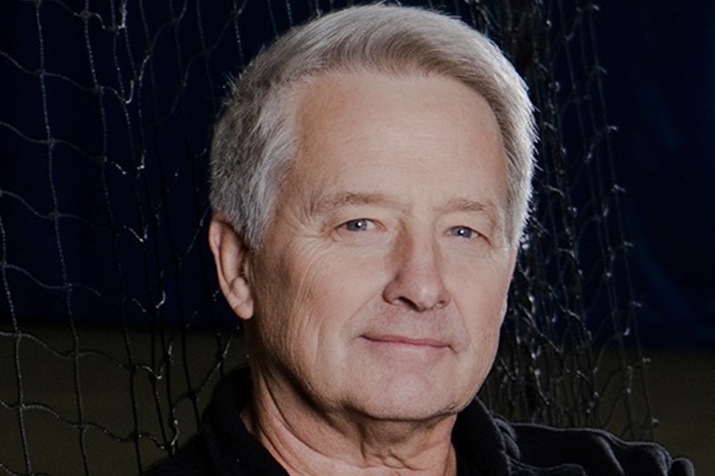We’re excited to announce that Greg Moran, a contributing writer for Tennis View, has released his latest book, “The Truth About Tennis: The Definitive Guide for the Recreational Player,” now available on Amazon.
Tailored for the vast community of recreational players worldwide, Greg’s book draws on his extensive experience. Celebrated as the “Best coach of recreational players in the country,” he has dedicated over 50 years to mastering the sport—playing, coaching, researching, and writing about tennis. His passion has seen him spend an astounding 100,000 hours directly on the court, guiding players aged 3 to 93 to elevate their game. He knows precisely what strategies yield success and which ones to avoid.
In the upcoming 5 issues, look forward to exclusive excerpts from Greg’s acclaimed book. Plus, as a special treat for our Tennis View readers, Greg is generously offering free copies of The Truth About Tennis to the first ten individuals who reach out to him (limited to the United States). You can contact Greg via email at Gmfsrc@optimum.net.

Meet Greg Moran
Mastering High-Percentage Singles
To start, focus on playing down the center of the court in the initial games. This technique minimizes the risk of hitting out while allowing you to find your rhythm, shake off nerves, and assess an important factor: Can your opponent maintain consistent play?
For players at the 3.0 level and below, this simple strategy often suffices, as many struggle to keep their focus beyond a couple of shots. After their attention wanes, they tend to attempt low-percentage winners, gifting you the point.
However, as you progress to a 3.5 level and above, relying solely on consistency may not be effective. At this juncture, incorporate high-percentage strategies into your singles play:
Reassess the Big Serve
Today’s players often adopt a “blast and push” serving approach. While firing off a powerful first serve may seem advantageous, if it goes off-target, they fall back on a weaker second serve, assuming they will still be in the game. This approach can work at the 3.0 level, but at 4.0 and above, a skilled opponent will capitalize on your weaker serve.
If you can’t consistently place your first serve at over 100 m. p. h., it’s more productive to refine your serves for accuracy, aiming to land 75% of them in. Focus on spin and placement rather than raw power.
Your serving targets should include down the T, towards the body, and out wide. Adjust your approach as the match unfolds, especially if you notice weaknesses in your opponent’s returns.
Every Return is Critical
When facing a strong server, adopt a reactive mindset. Use their speed to guide your returns, aiming them five to seven feet over the net and down the middle. If the server follows up with a volley, target your return directly at their feet.
If the first serve falters, transition into an attacking mindset. While many professionals advise stepping in to pounce on a weak second serve, I encourage a different strategy. Instead, focus on maintaining control. Propel a deep cross-court return that establishes your dominance.
Depending on the quality of the opponent’s second serve, you may find openings to advance toward the net. Consider your return as an approach shot and close the distance with an assertive play. Occasionally, a well-placed drop shot can catch your opponent off guard.
Aim Higher Over the Net for Depth
In rallies, the depth of your shot significantly determines its quality. Aim for your balls to land within three feet of your opponent’s baseline by targeting five to ten feet over the net. Lower net clearance often results in shorter returns, while professional players effectively use height to enhance their strokes. Here are the average net clearances for some of the game’s elites:
Nadal: 90 inches
Federer: 70 inches
Djokovic: 63 inches
The net height is 3 feet (36 inches), illustrating how higher clearance translates to deeper, more effective shots.
Maximize Crosscourt Groundstrokes
Strive to direct 80-90% of your groundstrokes crosscourt. This tactic minimizes the risk of hitting into the net while taking advantage of the court’s length. Additionally, it forces your opponent to cover more ground, creating gaps in their defense.
During practice, have one player hit exclusively crosscourt while their partner targets the sidelines. You’ll soon realize how much more movement the down-the-line player must exert. This not only clarifies the strategy but also serves as a valuable conditioning drill.
As the rallies unfold, anticipate your opponent’s mistakes:
- An impatient error that leads to a point for you.
- A risky down-the-line shot, allowing you to seize control of the point.
- A short ball that enables you to attack.
Position yourself diagonally in relation to where your opponent will strike their shot, facilitating efficient movement to intercept their likely crosscourt returns. The exception arises when you hit directly down the middle; thereafter, return swiftly to your center position.
Direct Your Approach Shots Ahead
There’s a common saying: “The point doesn’t begin until someone hits a short ball.” When it occurs, advance and strike your approach shot straight ahead. This method ensures a quicker return to your opponent while positioning you advantageously at the net.
By hitting straight ahead, you remain visible to your opponent, adding pressure as they prepare their shot. Conversely, hitting crosscourt opens up their options, allowing them to exploit gaps as you shift directions.
Claim Ownership of the Net
Even in this era of powerful groundstrokes, the player who dominates the net in singles often controls the point. Look for every opportunity to advance, but remember to choose your moments wisely, ensuring your shots put your opponent on the defensive.
Once at the net, prepare for the likelihood that your first volley won’t end the point; instead, aim to establish deep returns. After executing the first volley, stay alert for a second opportunity to put the ball away, aiming to connect above the net where you can move forward to strike.
When controlling the net, the pressure shifts to your opponent. Don’t rush; if winning requires multiple volleys plus an overhead, take your time.
Practice Patience
In singles or doubles, the player—or team—who exhibits patience and discipline, often termed as “suppressing impulsiveness,” is typically the one who prevails.




